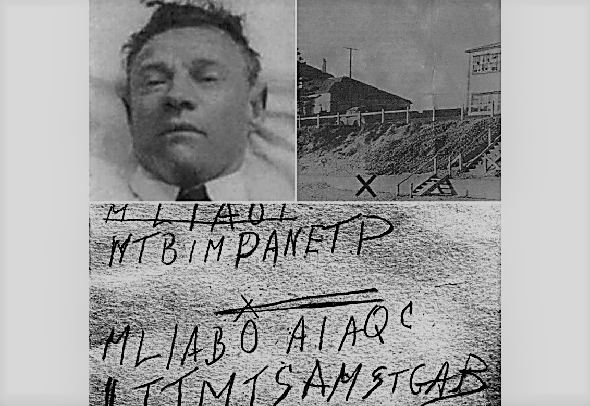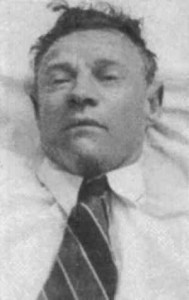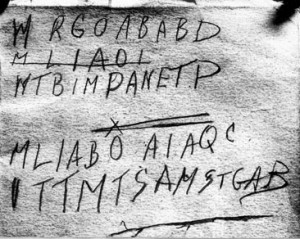Has the Somerton man been identified?
Two scientists claim to have solved the identity of the mysterious Somerton man who was found dead in Adelaide in 1948. Has the mystery really been solved?
“Somerton man to be exhumed” was the title of an article on this blog over a year ago. The exhumation and DNA examination announced at the time was expected to solve a spectacular mystery: The identity of the man found dead in 1948, known as the “Somerton Man” after the place where he was found on Somerton Beach in Adelaide, Australia, was to be clarified.
The Somerton Man
For those who don’t know this story yet: The Somerton Man probably arrived in Adelaide by train in late November 1948 and then took a bus from the train station to Somerton Beach. He was well dressed, in good physical shape, and believed to have been in his early 40s. He was seen on the beach by several witnesses. On December 1, his body was found in the sand.
The Somerton man probably died of poisoning or allergic shock. Whether it was homicide, suicide or natural death could never be determined.
The Somerton man had apparently tried to conceal his identity. He was not carrying any identification papers. The labels from his clothing had been removed. Only a few everyday objects were found in his suitcase, which hardly allowed any conclusions to be drawn about his origin. It was not possible in the following decades to find out who the dead man was.
In the suit of the dead man, one came across a piece of paper with the inscription “Tamam Shud” torn out of the book “The Rubaiyat of Omar Khayyam” by Edward FitzGerald. The corresponding copy of the book was found nearby. The following letters were noted in it (Tamam Shud cryptogram):
The Tamam-Shud cryptogram probably consists of the first letters of English words. These could form a text (a poem?) or a list of terms. Nothing more is known about it.
I have blogged about the Somerton man on Cipherbrain several times. In Australia, this case is very well known. There is a book about it (“The Unknown Man” by Gary Feltus), on YouTube you can watch documentaries about it. In my book “Unbreakable” there is a whole chapter dedicated to this case. And, of course, countless theories have been published over the decades, but none of them could be proven.
Last year, the authorities in Australia agreed to exhume the unidentified man. However, nothing has been heard since.
Was the Somerton man called Charles Webb?
Yesterday Ralf Bülow, Georg Herrmann and Andreas Barchfeld pointed me to new press reports about the Somerton Man. In these they said: The identity of the dead man is now certain after a DNA analysis. At first I thought that the examinations of the exhumed corpse had finally produced a result, but that was not the point.
Rather, the various articles are about an investigation conducted by Australian scientist Derek Abbott and U.S. forensic scientist Colleen Fitzpatrick. The two apparently had a hair from the dead man available for DNA analysis, the results of which they were able to compare with DNA database entries. The result: the Somerton man is believed to have been a then 43-year-old electrical engineer named Charles Webb, or Carl Webb.
What to make of this? First of all, as a layman, I assume that DNA analysis is very reliable. Moreover, Abbott and Fitzpatrick are professionals whom I consider competent and reputable. Therefore, I take the result of their research seriously, even though not all my doubts have been removed.
Abbott and Fitzpatrick provide some additional arguments that they are correct. Apparently, there is no source indicating that Webb was alive after 1948. In particular, the two were unable to identify an obituary or anything comparable. Instead, they found a close relative of Webb named Gerald Thomas Keane. This could explain why some of the dead man’s clothing was labeled “T Kean[e].” Previously it was assumed that these were markings made by a laundry, but of course it could also be that a previous owner placed these markings.
Unfortunately, there are no other starting points so far to verify whether the Somerton man is indeed identical to Charles Webb. A photograph of Webb has not yet been released. Too many details from Webb’s biography are also not known. The unexplained cause of death will probably remain a mystery for the time being anyway.
And finally, the biggest mystery in this context, from my point of view, has not yet been solved: How can it be that a person whose portrait has been circulating through the press for decades is not recognized by anyone? I would still be able to understand this if it was a person who came from the other side of the world and who had only been in Australia for a short time. Charles Webb, however, was Australian – he came from Melbourne, 700 kilometers away. Why did no one notice that he had disappeared at some point and that he resembled the man in the photo?
If the Somerton man is indeed Charles Webb, then this could provide new approaches to solving the Tamam-Shud cryptogram. Perhaps he has left some records that could shed light on the matter. In any case, I am curious.
If you want to add a comment, you need to add it to the German version here.
Follow @KlausSchmeh
Further reading: Somerton-Mann: Warum erkannte niemand den unbekannten Toten?
Linkedin: https://www.linkedin.com/groups/13501820
Facebook: https://www.facebook.com/groups/763282653806483/






Letzte Kommentare